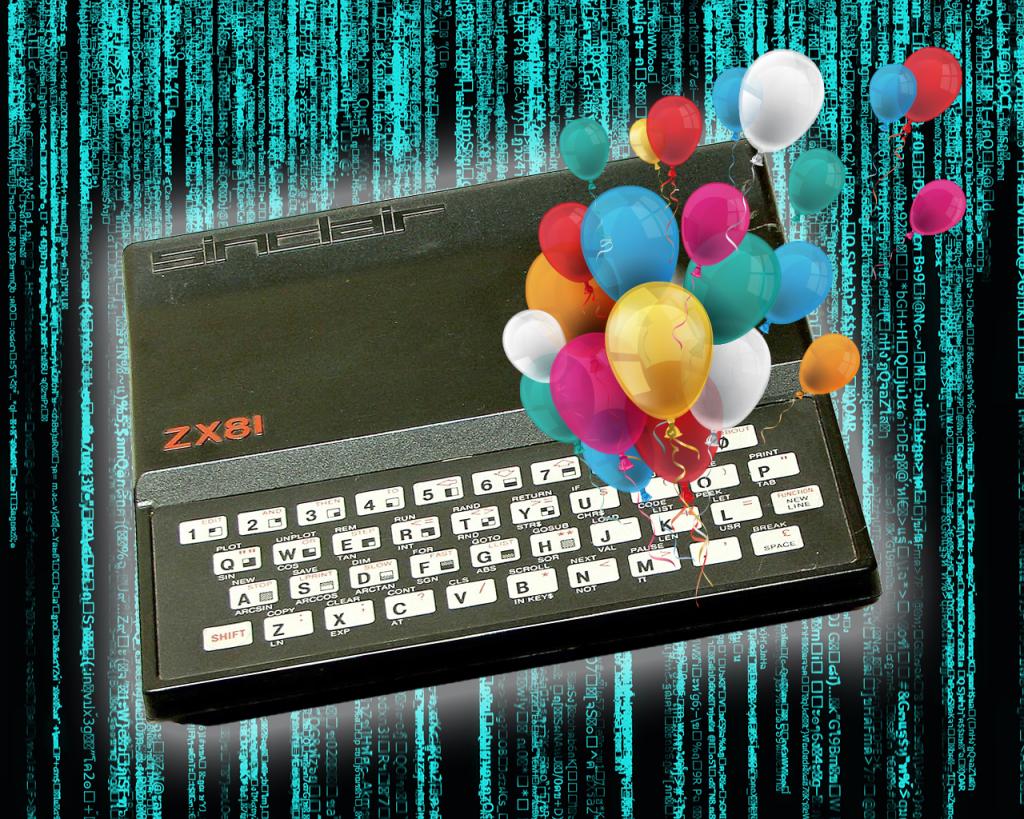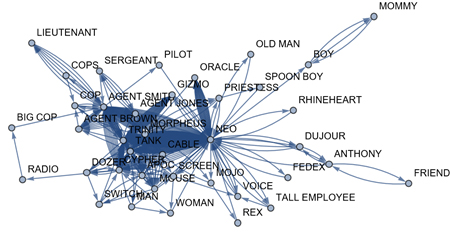Machino and The Matrix

Machino, Prof. Zvi Lotker’s movie buff computer, prepares to mark the anniversary of the ZX81 and has a special analysis of the movie The Matrix in store – including an interesting perspective and the answer to the question on everyone’s minds: Is Neo The One?
In 1982 I received my first computer, the ZX81, a bar mitzvah gift. It had a 1k memory; you could code in BASIC or machine language. I was enchanted. I programmed Space Invader, and it helped me learn English and math. Last week, Machino was cordially invited to celebrate ZX81’s 40th birthday. Each participant was asked to prepare a short talk on the topic of the human/computer relationship. Machino consulted me, and naturally, we chose AI in cinema, and what movie better represents this topic than The Matrix? So we sat down, Machino and I, to watch the movie.
As is always the case when I have a dialogue with Machino about a movie, it needs some files: the movie itself, a translation file, and an SRT script file. Those weren’t hard to find. Our dialogues start with me turning on the computer.
Zvika: Good morning, Machino!
Machino: Good morning, Zvika. I wish to watch the movie The Matrix. I would like to prepare a talk in honor of ZX81.
Zvika: Great, I love that movie, and I love the ZX81. We can get the script from IMSDB, and a script and SRT file here.
Machino: Have you prepared the files I require for viewing the movie?
Zvika: Sure did. You can find them in the library, our usual spot. I’m uploading everything to your memory.
Machino: This is a fascinating movie. It discusses the freedom of choice.
This is what the movie’s dialogue graph looks like:

Fig. 1: “Who spoke after whom” according to the script of The Matrix
I’ve prepared an executive brief for those who did not watch the movie. Fig, 2 summarizes the plot: For every action scene the function (in red) drops (segments 1, 4, 7, 8, 9); the philosophic scenes (in blue) rise (2, 3, 5, 6).

Fig. 2: A Tale of Two Clocks: number of speakers vs. number of words
I have a short 12-minute video here. Is there anything else you would like to know?
Zvika: I’d like to know who the main characters are.
Machino: That is quite easy. Neo is the main character, since he has the greatest number of arches in the “who spoke after whom” graph (Fig. 1). Trinity is the second most important character. You can deduce that from the rank list of the Fig. 1 graph:
{{"BIG COP", 2}, {"COPS", 2}, {"FEDEX", 2}, {"FRIEND", 2}, {"OLD MAN", 2}, {"PILOT", 2}, {"RADIO", 2}, {"REX", 2}, {"RHINEHEART", 2}, {"SPOON BOY", 2}, {"MOMMY", 3}, {"BOY", 4}, {"MOJO", 4}, {"TALL EMPLOYEE", 4}, {"WOMAN", 4}, {"MAN", 5}, {"ANTHONY", 6}, {"DUJOUR", 6}, {"LIEUTENANT", 6}, {"PRIESTESS", 6}, {"SERGEANT", 6}, {"SWITCH", 6}, {"VOICE", 6}, {"COP", 8}, {"DOZER", 8}, {"CABLE", 12}, {"SCREEN", 12}, {"AGENT BROWN", 16}, {"MOUSE", 16}, {"APOC", 20}, {"ORACLE", 22}, {"GIZMO", 24}, {"AGENT JONES", 28}, {"CYPHER", 74}, {"AGENT SMITH", 86}, {"TANK", 116},{MORPHEUS", 182}, {"TRINITY", 216}, {"NEO", 310}}
Zvika: That much is clear from watching the movie. It also makes sense and is easy for a computer to compute.
Machino: Another way to see how the characters progress is to look at how their significance changes over time. For instance, you can see that at the beginning of the movie, Trinity is the most important character. Only after some time – 20% of the movie – does Neo assume that role.

Fig. 3: Graph of the five main characters
Zvika: I’d love to know what you can tell us about the movie’s main question: is Neo The One? Does he have free will, or must he be The One?
Machino: That is indeed the main question. I believe that Neo becomes The One during the movie. This occurs when Agent Smith captures Morpheus. At that point, Neo loses his free will.
Zvika: That’s very interesting, but how can you know that? Based on what?
Machino: In order to calculate free will in the movie, I defined two clocks: one counts the number of question marks – that would be  ; the second count the number of exclamation points –
; the second count the number of exclamation points –  . We can now calculate the M diagram for both graphs,
. We can now calculate the M diagram for both graphs, . You can see it in Fig. 4:
. You can see it in Fig. 4:

Fig. 4: Free will in The Matrix
The first red dot appears precisely when Agent Smith finds out about the name Neo. That is when Neo’s choice, finding out what the Matrix is, begins. The second point is when Neo must free Morpheus. You can see these points in the table below:
|
What was said |
Who said |
Line |
|
It’s already begun |
Agent Jones |
44 |
|
Know what? |
Agent Smith |
534 |
This means that as long as Morpheus is free, Neo has free will. Once Morpheus is taken, Neo loses his free will and The One is born.
Zvika: Oh, wow! That’s a really good analysis. So you’re going to talk about that on ZX81’s birthday?
Machino: Indeed.
Zvika: Happy birthday, ZX81.
Want to learn more about how computers can help us understand movies? Read the book:
"Analyzing Narratives in Social Networks: Taking Turing to the Arts"
Last Updated Date : 26/10/2021



